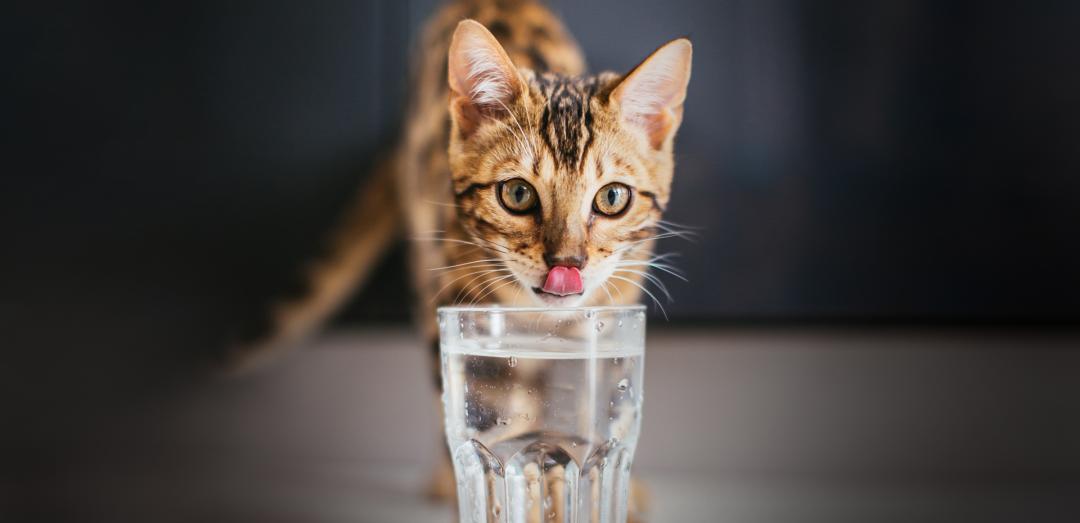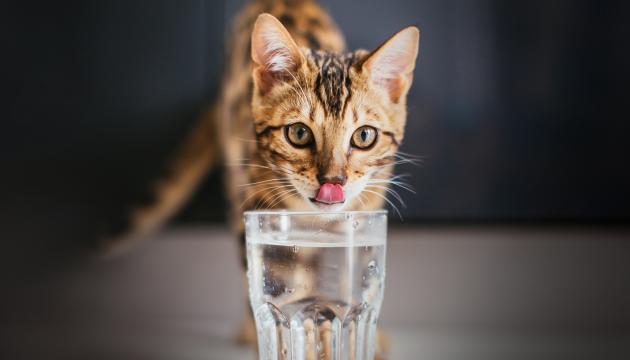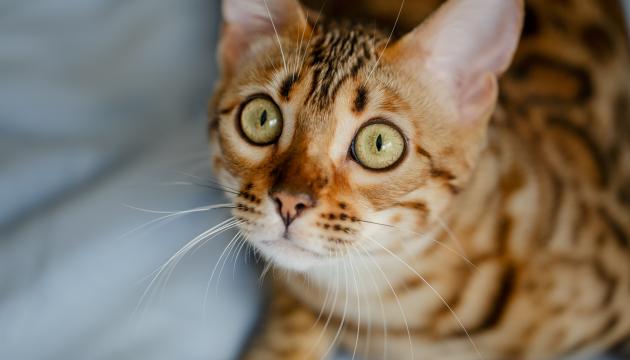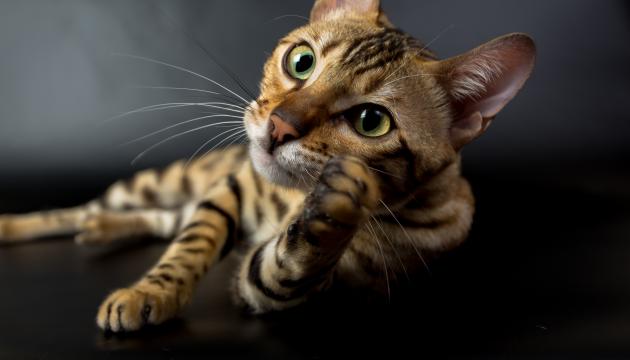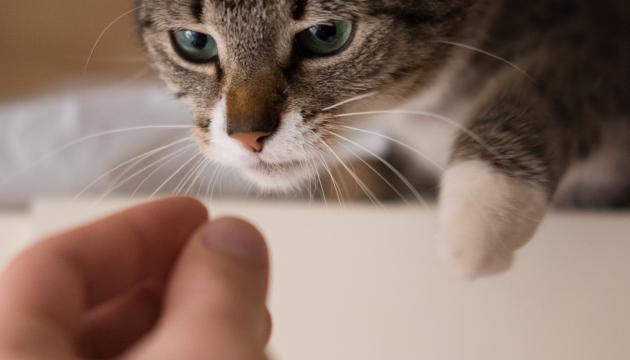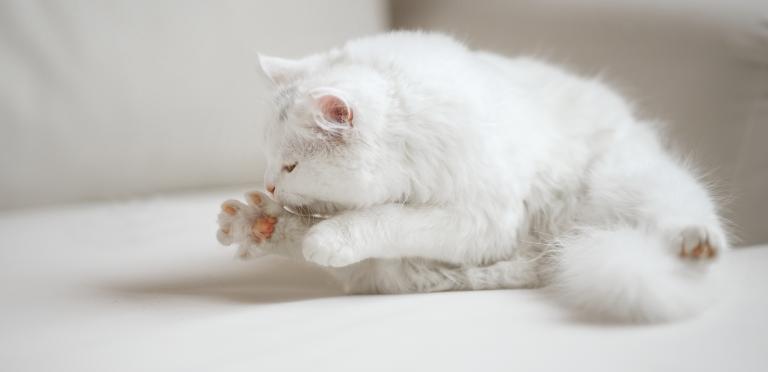

Urinary tract infection in cats
Urinary tract infection in cats and other urinary tract problems are some of the most common reasons for taking a cat to the vet. Usually, the first signs for urinary tract infection in cats is that the cat is peeing in the wrong places.
Urinary problems can be prevented by monitoring your cat's peeing habits, drinking, stress levels and making sure the litter box is clean and suitable for your cat. Read this article to find out more about urinary tract infection in cats and how you can prevent your cat’s urinary tract problems.
Why my cat pees in the bed? – Symptoms of urinary tract infection in cats
When a cat urinates in unusual places, such as on the sofa, carpet, or bed, it is easy to imagine that the cat is protesting or showing its displeasure. However, this is not the case; the behaviour is most often due to other reasons.
Signs of a urinary infection in cats
- The cat urinates on the bed or other wrong places.
- The cat urinates often and constantly runs to the litter box.
- Increased drinking.
- There is blood in the urine, or it is dull coloured and smells very bad.
- The cat licks its genital area more than usual.
- The cat makes noises or fusses around in the litter box unusually long.
You may also notice more subtle symptoms of urinary tract issues in your cat's overall condition. The cat may have a loss of appetite, appear sleepy, and may withdraw into itself. The cat might also be sensitive to touch and show aggression related to pain.
All the above symptoms may also be related to other urinary problems than urinary tract infection in cats.
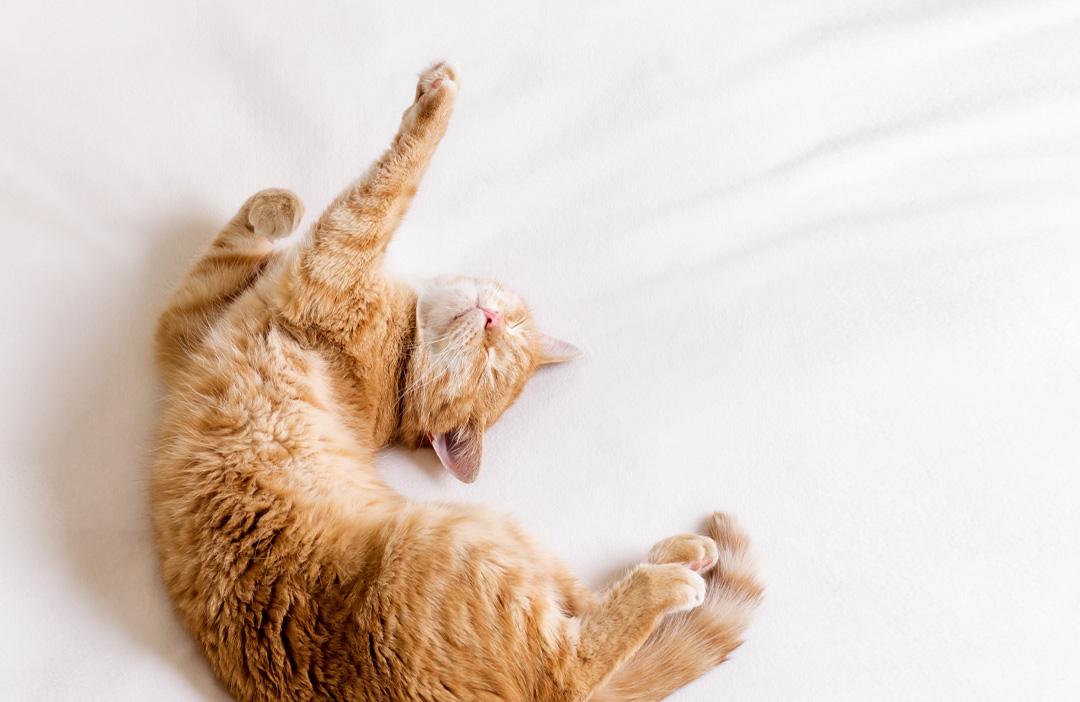
Reasons for urinary tract infections in cats
Feline idiopathic cystitis (FIC): Painful condition where a cat’s bladder gets inflamed. The cause for FIC has not been identified despite investigations and research. Stress, often due to various reasons, is commonly suspected as the main cause.
Bacterial urinary tract infection in cats (UTI): Generally found in older cats, but not very common. Bacterial infections can be treated with antibiotics. Read more about caring for an old cat.
Bladder stones and urine crystals: Urinary crystals, common in cats, form mineral deposits in the bladder or urinary tract. Without treatment, they can accumulate into bladder stones and lead to a dangerous blockage. Some cat breeds, like Ragdolls and Persians, are more at risk.
The cat’s diet, urine pH, obesity, or low water intake can cause crystals, especially if the cat only eats kibble. Feeding wet cat food helps prevent urinary crystals by keeping the cat hydrated. Ensuring the cat gets enough water helps to keep the urine dilute and encourage frequent urination, which flushes the bladder.
Stress: For sensitive cats, various life changes such as moving or a new family member or pet can cause stress, which is one of the most common causes of idiopathic cystitis.
Stress can also be triggered by an unsuitable litter box, a lack of litter boxes, or their incorrect placement in the house. The type of cat litter matters too. By trying different litters, you can find an option that suits your cat. Explore PrimaCat cat litters.
Impropriate diet: If the cat drinks poorly or eats only dry food, its urine can become very concentrated witch increases the risk for urinary tract problems. Also, urinary crystals are often associated with food high in magnesium, phosphorus, or calcium. Urinary issues can be prevented by providing the cat with high-quality, meaty wet food and plenty of water to drink.
Neutered or sterilised cats can easily get urinary problems, but the right food can help prevent them. Check out our feeding tips for neutered cats.
How to treat urinary tract infection in cats
Take your cat to the vet if you think it has a urinary infection or any other urinary tract issue. Do not wait, as urinary tract problems can be painful and untreated bladder stones can even be deadly for cats.
Making sure your cat gets enough water and eats a diet that supports urinary health is key in treating urinary tract infection in cats. Antibiotics are used for infections caused by bacteria.
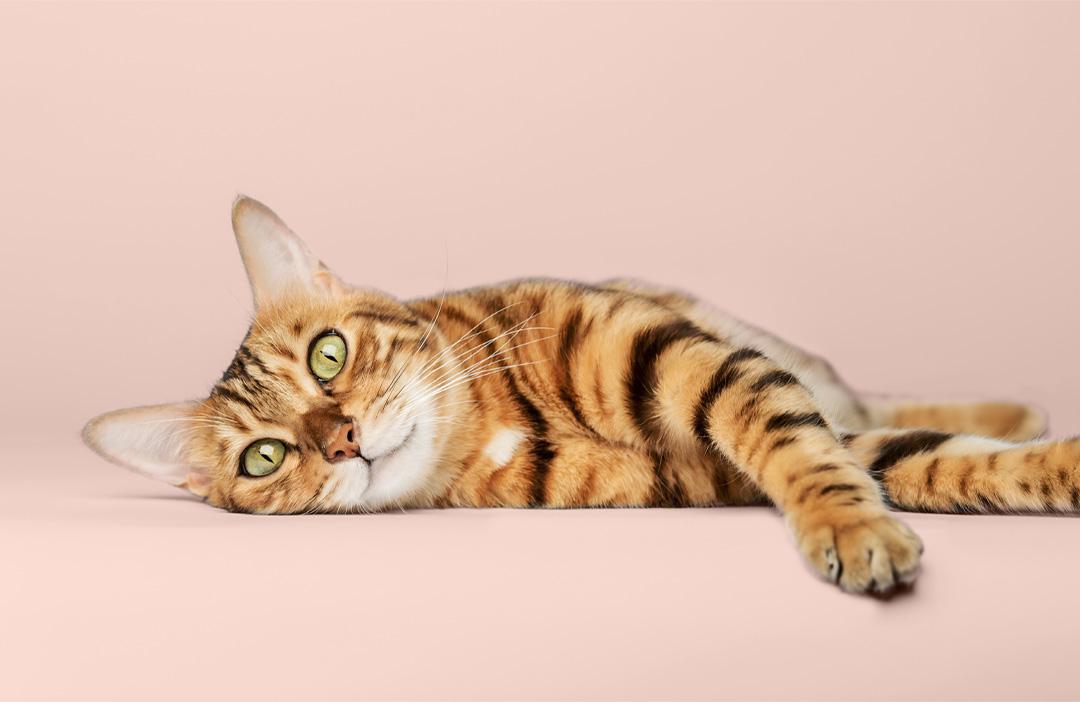
How to prevent cat’s urinary tract problems?
- Get the litter box in order
It is good to have at least one litter box per cat in the household. If you have many cats, get an extra litter box. Keep the litter boxes clean and use plenty of litter. Choose a cat litter that your cat prefers and a litter box with low sides so that especially older or less mobile cats can easily access it. Place the litter box in a quiet area where the cat can do its business in peace. - Reduce the cat’s stress
Any changes in the cat's routine can be stressful, especially for sensitive cats, which is why adjusting to new food or cat litter should be done gradually. Read our tips for changing cat food. Avoid making changes to the cat's routines or diet during significant life changes. These include moving, the addition of a new family member, or the loss of an old cat companion. - Ensure proper hydration and diet
Feed the cat according to its individual and natural needs. Sugar-free wet food high in meat is often a good choice for the cat's main diet if it is complete cat food. Cats need to get most of the water from their food, as they naturally have a low thirst drive. Learn more about the cat's natural diet. - Pay attention to the cat’s weight
A normal weight and active lifestyle can help prevent urinary tract infection in cats and other diseases related to obesity. Check out our tips for preventing and managing cat obesity.
Keeping the cat hydrated is crucial for the cat’s health. But how to get the cat drink enough water? Read our tips!
